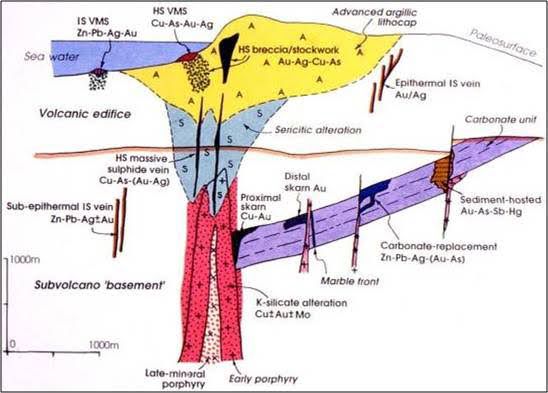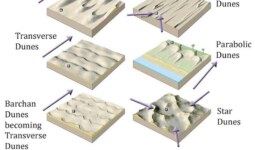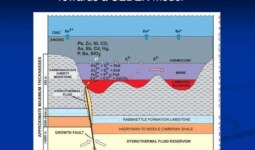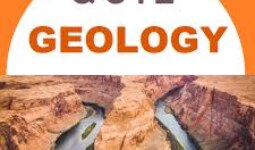Introduction
Gold exploration is a complex process that requires a combination of geological knowledge, geochemistry, and geophysical techniques. One of the most effective methods for locating gold deposits is the identification of pathfinder elements and minerals. Pathfinder elements and minerals are geochemical indicators that suggest the presence of gold nearby, even if the gold itself is not immediately visible. This guide explores the role of pathfinders in gold exploration, their significance, and how geologists use them to discover new gold deposits.

What Are Pathfinders for Gold Deposits?
Pathfinder elements and minerals are geochemical indicators that have a strong association with gold mineralization. These indicators help geologists trace the source of gold, especially in areas where gold is dispersed and difficult to detect directly. Pathfinders are particularly useful in covered terrains, where the primary deposit is buried under sediments or weathered material.
Characteristics of Good Pathfinders
A good pathfinder element or mineral should:
- Have a strong geochemical association with gold.
- Be more mobile than gold in surface and subsurface environments.
- Occur in higher concentrations than gold in host rocks.
- Form broader geochemical halos than gold, making them easier to detect.
Common Pathfinder Elements for Gold
Several elements are commonly associated with gold mineralization, including:
1. Arsenic (As)
- Arsenic is one of the most reliable pathfinder elements for gold.
- It is commonly found in association with arsenopyrite (FeAsS) and other arsenic-bearing sulfides.
- Many gold deposits, particularly those of the orogenic and Carlin-type, show high arsenic concentrations.
- Arsenic anomalies in soil, stream sediments, and rocks can indicate potential gold mineralization.
2. Antimony (Sb)
- Antimony is another key pathfinder for gold, especially in epithermal and Carlin-type deposits.
- It is often found in minerals like stibnite (Sb₂S₃).
- Elevated antimony levels in geochemical surveys suggest the presence of hydrothermal systems that may have transported gold.
3. Mercury (Hg)
- Mercury is highly mobile and often forms a halo around gold deposits.
- It is commonly associated with cinnabar (HgS) and is particularly useful in hot spring and epithermal gold systems.
- Mercury vapor can sometimes be detected above buried gold deposits.
4. Silver (Ag)
- Silver is frequently found with gold in low-sulfidation epithermal deposits.
- High silver-to-gold ratios can indicate different mineralization styles and help in targeting gold-rich zones.
5. Copper (Cu), Lead (Pb), and Zinc (Zn)
- These base metals are commonly associated with gold in porphyry and skarn deposits.
- Their geochemical halos often extend beyond the gold mineralization zone, making them useful in regional exploration.
6. Tellurium (Te) and Bismuth (Bi)
- Tellurium and bismuth are commonly found in gold-telluride minerals such as calaverite (AuTe₂).
- These elements are useful in identifying intrusion-related gold deposits.
Pathfinder Minerals for Gold Deposits
In addition to chemical elements, specific minerals can serve as indicators of gold mineralization. Some of the most important pathfinder minerals include:
1. Arsenopyrite (FeAsS)
- The most significant sulfide mineral associated with gold.
- Found in orogenic and Carlin-type gold deposits.
2. Pyrite (FeS₂) and Marcasite (FeS₂)
- Often associated with gold in hydrothermal deposits.
- Gold can be present as invisible gold within pyrite.
3. Stibnite (Sb₂S₃)
- An important mineral in epithermal gold systems.
4. Cinnabar (HgS)
- Associated with mercury and indicates proximity to epithermal gold deposits.
5. Tourmaline and Sericite
- Found in orogenic gold deposits and used as alteration indicators.
How Geologists Use Pathfinders in Gold Exploration
Gold exploration involves multiple steps where pathfinders play a crucial role:
1. Geochemical Surveys
- Soil Sampling: Collecting soil samples to detect anomalous concentrations of pathfinder elements.
- Stream Sediment Sampling: Analyzing sediments from streams that drain potential mineralized areas.
- Rock Chip Sampling: Collecting surface rock samples to test for geochemical anomalies.
2. Geophysical Methods
- Induced Polarization (IP) Surveys: Detecting sulfide minerals like arsenopyrite and pyrite, which are often linked to gold.
- Magnetic Surveys: Identifying alteration zones associated with gold mineralization.
3. Drilling and Core Logging
- Once anomalies are detected, drilling is conducted to confirm the presence of gold.
- Geologists analyze drill cores to identify pathfinder minerals and their relationship with gold.
4. Alteration Mapping
- Hydrothermal alteration zones often contain pathfinder minerals like sericite, tourmaline, and sulfides.
- Mapping these zones helps in narrowing down target areas for further exploration.
Case Studies: Pathfinder Use in Gold Exploration
1. Carlin-Type Gold Deposits (USA)
- Arsenic, antimony, and mercury are key pathfinders.
- Gold is often found as microscopic particles in pyrite and arsenopyrite.
- Geochemical surveys detecting As, Sb, and Hg anomalies have led to major discoveries in Nevada.
2. Epithermal Gold Deposits (Indonesia, Mexico, New Zealand)
- Pathfinder elements include Ag, As, Sb, Hg, and Te.
- Geologists use stream sediment sampling to detect anomalous Hg and Sb values in regions with active hydrothermal systems.
3. Porphyry Gold Deposits (Chile, Canada, Papua New Guinea)
- Copper (Cu), molybdenum (Mo), and tellurium (Te) are key pathfinders.
- Large geochemical halos make these deposits easier to detect.
Conclusion
Pathfinder elements and minerals play a crucial role in gold exploration by providing indirect evidence of hidden mineralization. Geologists rely on geochemical surveys, geophysical methods, and alteration mapping to identify potential gold deposits efficiently. Understanding the relationships between gold and its pathfinders enhances the chances of discovering economically viable deposits, making this knowledge essential for both students and professional geologists.
By applying pathfinder techniques, exploration geologists can improve their targeting strategies and contribute to the discovery of new gold resources worldwide.




Leave a comment